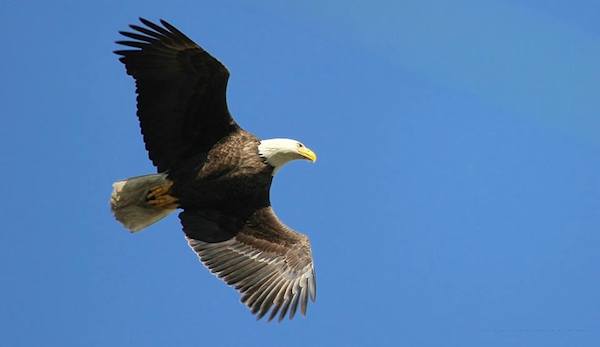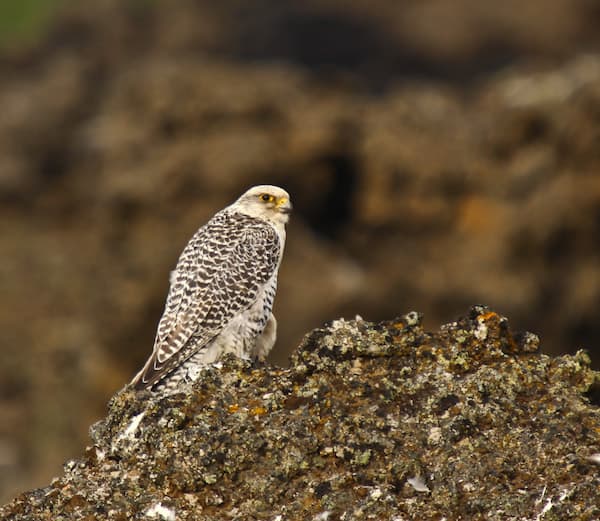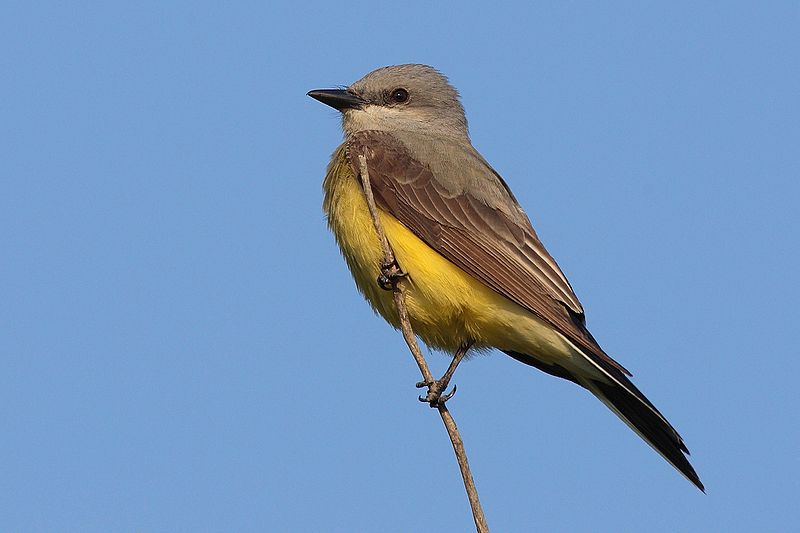There is no confusing the adult bald eagle, with its huge size and gleaming white head and tail. The raptor does not attain adult plumage until after the third year. Until then, immature birds are dark brown with varying degrees of white mottling on their backs, wings, bellies, and, in older birds, heads. Depending upon age, the large bill is blackish or accented in the bright yellow seen in adults. Immatures and adults have strong, bright yellow talons.
Listen for
For such a majestic bird, the Bald Eagle has a wimpy voice. It utters a variety of high-pitched, chattering whistles that sound more like an excited puppy than a national symbol.
Find it
Water plays a strong role in where bald eagles hunt and nest. In the process of rebounding in many areas, bald eagles now nest in most states, where they are often local nesters tied to specific sites. They are particularly common from Florida to coastal South Carolina, but the largest breeding populations are in Alaska and western Canada. During winter, bald eagles often congregate at wetland areas, rivers, and dams, where fishing or carrion feeding is particularly productive.
What Does a Bald Eagle Eat?
Bald eagles hunt from perches or swoop down after sighting prey during soaring. While fish are preferred prey (frequently grappled from the water in the eagle’s mighty talons), eagles also eat a wide variety of other foods, depending upon individual, time of year, and location.
Carrion—particularly dead fish, birds, and mammals—plays an important dietary role. Many live animals are also caught: muskrats, reptiles, amphibians, crustaceans, and birds—as large as great blue herons—have been documented. Bald eagles also steal fish from ospreys and other birds.
Nesting Behavior
Bald eagles usually nest high in large trees in huge, bulky stick nests that the birds often reuse over the years. Both mates collect sticks, and nest building may take several months. The female usually lays two eggs, which she and her mate incubate for just over a month.
Once the first chick hatches, both parents incubate and brood, or cover, the eggs and hatchlings. Both parents feed their young, which leave the nest between 8 to 14 weeks after hatching.
WOW!
The bald eagle barely edged out the wild turkey when our founding fathers were voting on a national symbol.




